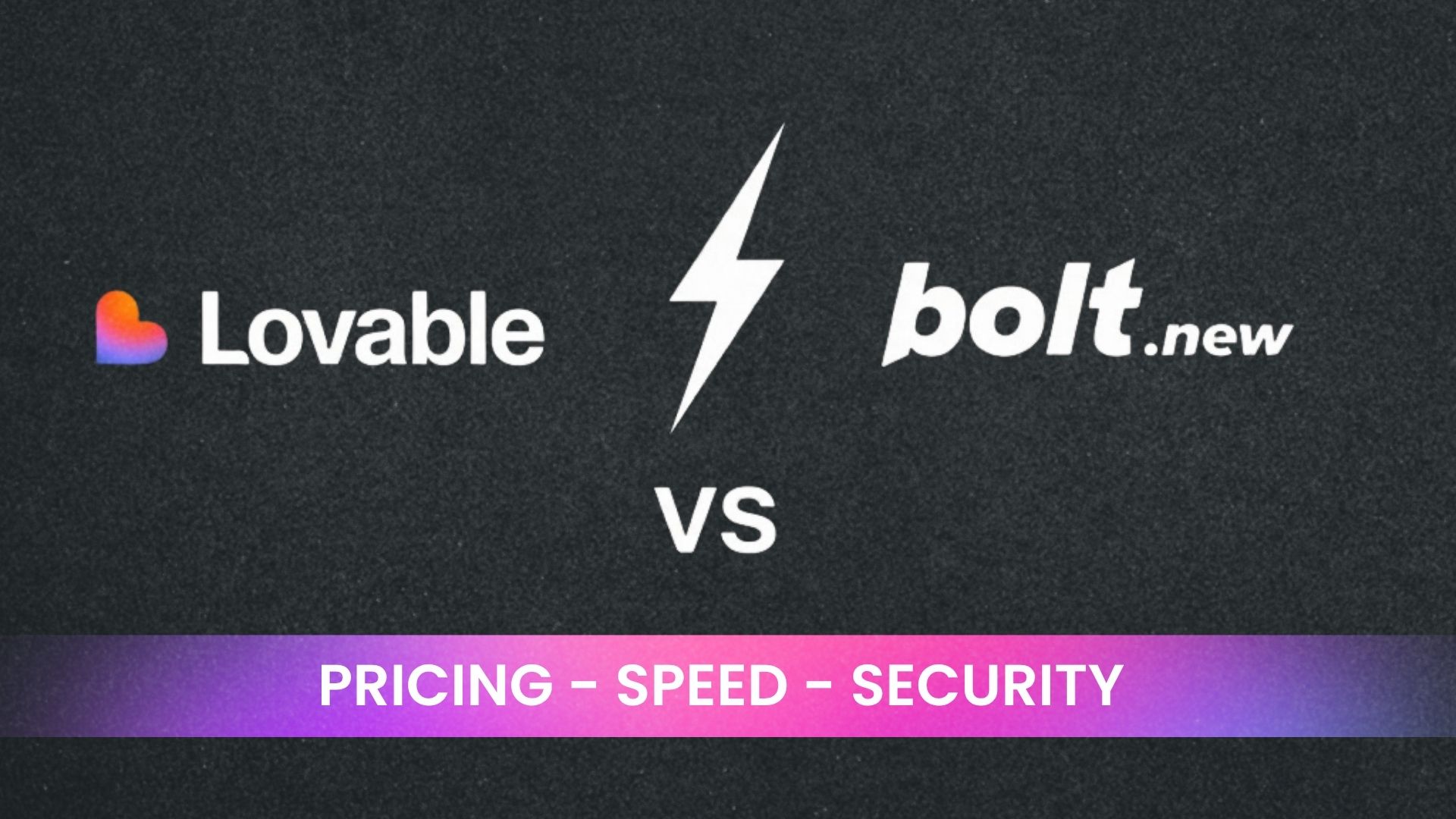Typography is more than just choosing beautiful fonts—it’s a powerful design element that directly affects how your audience absorbs content. Whether you’re creating a blog, app, website, or printed material, the way you present text can either invite your readers in or push them away.
In this comprehensive guide, we’ll explore typography principles, best practices, examples, and actionable tips that improve readability, engagement, and user experience. You’ll learn how to fine-tune fonts, spacing, alignment, contrast, and more for optimal legibility.
Launch Your App Today
Ready to launch? Skip the tech stress. Describe, Build, Launch in three simple steps.
BuildWhat is Typography?

Typography is the art and technique of arranging type to make written language legible, readable, and visually appealing.
It involves:
- Font selection
- Font size
- Line height (leading)
- Letter spacing (tracking)
- Word spacing and kerning
- Color and contrast
- Alignment and hierarchy
Typography matters because 90% of digital content is text. The better it reads, the more your audience understands and acts.
Why Readability Matters
Readability affects:
- User experience (frustration vs. flow)
- Comprehension (retention vs. scanning)
- Accessibility (inclusivity for all readers)
- Conversions (CTA clicks, bounce rate, SEO ranking)
According to Google and Nielsen Norman Group:
- Users leave sites in 10–20 seconds if they don’t find readable content.
- Readable pages have up to 124% more time-on-page and 70% lower bounce rates.
- Key Typography Principles for Readability
Choose Readable Fonts
| Font Type | Examples | Best For |
| Serif | Georgia, Times New Roman, Merriweather | Print, blogs, long-form reading |
| Sans-serif | Arial, Helvetica, Open Sans, Roboto | Apps, websites, mobile devices |
| Monospace | Courier, Consolas, Fira Code | Code blocks, developer tools |
| Display/Script | Lobster, Pacifico, Playfair Display | Headers or decorative uses only |
Best Practices:
- Use no more than 2–3 fonts per project
- Avoid overly decorative fonts for body text
- Ensure licensing and web-friendliness
2. Set Proper Font Sizes
| Element | Recommended Size (px) |
| Body Text | 16–18px |
| Mobile Body | 16–20px |
| Headings (H1-H4) | 24–48px depending on level |
| Captions | 12–14px |
Larger fonts improve scanability and accessibility, especially on mobile.
3. Line Height (Leading)
Line height is the vertical space between lines of text.
- Recommended: 1.4–1.6x the font size
- Too tight = cramped and hard to follow
- Too loose = disjointed reading flow
Example:
- Font size: 16px → Line height: 24–26px
4. Letter Spacing (Tracking) and Kerning
- Tracking: Space between all letters
- Kerning: Space between specific letter pairs (e.g., AV, TO)
General tips:
- For body text: Leave tracking at default or slightly loose (0.5px)
- For uppercase headings: +1 to +2px tracking improves clarity
5. Maintain High Contrast
Poor contrast is one of the biggest barriers to readability.
| Background | Text Color | Accessibility |
| White | Black | ✅ Excellent |
| Light Grey | Dark Grey | ✅ Acceptable |
| Yellow | Light Gray | ❌ Avoid (low contrast) |
| Black | Neon Green4. Letter Spacing (Tracking) and Kerning |
- Tracking: Space between all letters
- Kerning: Space between specific letter pairs (e.g., AV, TO)
General tips:
- For body text: Leave tracking at default or slightly loose (0.5px)
- For uppercase headings: +1 to +2px tracking improves clarity
| Hard to read |
Use contrast ratio tools like WebAIM or Stark to ensure at least 4.5:1 contrast for body text.
6. Use Consistent Hierarchy
Create visual distinction between headings, subheadings, and body text.
Example Hierarchy:
- H1: 48px, bold
- H2: 36px, semi-bold
- H3: 28px, medium
- Body: 18px, regular
Consistency helps readers scan the page and find what they need faster.
7. Align Text Strategically
| Alignment | Best Use |
| Left | Default for most content |
| Center | Headlines, short quotes |
| Right | Rarely used (unless numeric data or charts) |
Avoid justified alignment—it often causes awkward spacing or “rivers” in paragraphs.
8. Limit Line Length
The ideal line length improves comprehension and reduces eye strain.
- Optimal range: 50–75 characters per line (including spaces)
- On mobile: Keep it 30–50 characters per line
Too long = tiring to read Too short = choppy and broken
9. Choose Readable Font Pairings
Combine fonts with clear contrast in weight or style.
Popular Pairings:
- Roboto (body) + Roboto Slab (heading)
- Open Sans (body) + Lora (heading)
- Montserrat (heading) + Merriweather (body)
Avoid pairing fonts that are too similar—readers won’t see a clear difference.
10. Optimize for Devices and Accessibility
Your typography should be responsive and inclusive:
| Element | Best Practice |
| Mobile font scaling | Use rem/em units, not px |
| Accessibility labels | Use ARIA, roles, and semantic HTML |
| Keyboard navigation | Ensure focus states are clear |
| Dyslexia-friendly font | Consider OpenDyslexic, Lexend, or Atkinson |
Typography for Different Platforms
Websites:
- Prioritize responsiveness
- Use web-safe fonts or Google Fonts
- Load fonts asynchronously to avoid FOUT (Flash of Unstyled Text)
Mobile Apps:
- Follow platform-specific guidelines (Apple HIG, Android Material Design)
- Font size should adapt to screen size and orientation
Print:
- Use serif fonts for long reading (e.g., Garamond, Georgia)
- DPI: Use high-resolution settings (300 DPI)
- Pay attention to margin and gutter spacing
Examples of Great Typography in Action
1. Medium.com
- Clean sans-serif font (Charter)
- Optimal line height and length
- Excellent mobile readability
2. Stripe Docs
- Uses Inconsolata for code + clean body font
- Excellent contrast and padding
3. Apple.com
- System font stack
- Crisp hierarchy and white space usage
Common Typography Mistakes to Avoid
| Mistake | Why It’s Bad |
| Using too many fonts | Creates visual clutter |
| Small font size (under 14px) | Hard to read, especially for older audiences |
| Low contrast colors | Fails accessibility, causes strain |
| Poor alignment | Makes layout look messy and unprofessional |
| Ignoring hierarchy | Confuses users and hinders scanability |
Tools for Perfecting Typography
| Tool | Purpose |
| Google Fonts | Free web-safe fonts |
| Adobe Fonts | Professional font library |
| Fontpair | Font combination inspiration |
| WebAIM Contrast Checker | Ensures WCAG compliance |
| Type Scale | Visualize consistent scaling |
How Imagine.Bo Helps You Get Typography Right
If you’re building a website or app using Imagine.Bo, you don’t have to worry about mastering CSS or typography code.
Just say:
“Make the body font Open Sans, set headings in bold Lora, with mobile-friendly scaling and accessible color contrast.”
Imagine.Bo’s AI understands and applies:
- Font combinations
- Responsive font scaling
- Web-safe imports
- Hierarchy and spacing
- Accessibility best practices
This means anyone—from designers to founders—can create stunning, readable apps without technical effort.
FAQs
Q1: How many fonts should I use?
Stick to 2–3 fonts maximum: one for body, one for headings, one optional for highlights.
Q2: What’s the most readable font?
Sans-serif fonts like Open Sans, Roboto, and Lato are highly readable on screens. Georgia and Merriweather are strong serif options.
Q3: What is good contrast for accessibility?
A contrast ratio of 4.5:1 or higher is ideal for body text. Use tools to test.
Q4: Should fonts scale on mobile?
Yes. Use relative units (em, rem, %) to allow for responsive scaling.
Q5: What font is best for dyslexia?
Fonts like OpenDyslexic, Atkinson Hyperlegible, and Lexend are designed to improve dyslexic readability.
Final Thoughts
Typography plays a crucial role in how your content is perceived and understood. While good typography goes unnoticed, bad typography stands out and drives users away.
If you want your app, blog, or product to be truly engaging and accessible, pay close attention to:
- Font choices
- Line spacing and hierarchy
- Color contrast
- Readability across devices
And if you’re building with Imagine.Bo, you can apply best practices automatically by simply describing your intent.
Because great design starts with clear communication—and typography is where it all begins.
Launch Your App Today
Ready to launch? Skip the tech stress. Describe, Build, Launch in three simple steps.
Build




